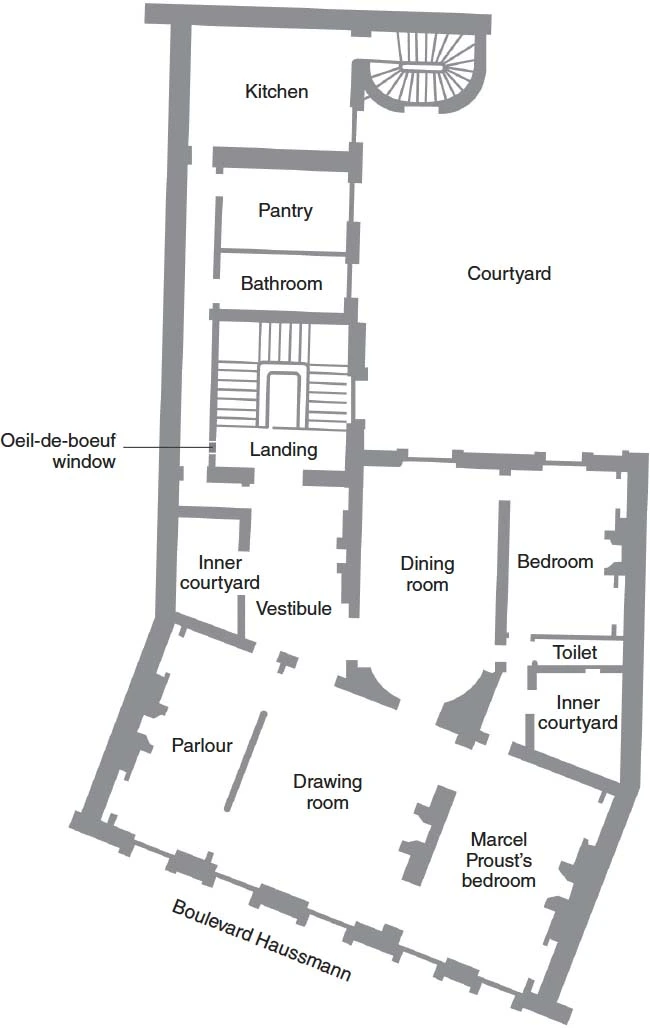Lerossignol’s grandparents, who were also named Lerossignol.
LYDIA DAVIS

Floor plan of the apartment in which
Marcel Proust lived from 1907 to 1919, at 102 Boulevard
Haussmann.
[Content in brackets has been supplied by the translator.]
1. Céleste Albaret, Monsieur Proust, trans. Barbara Bray (Paris: Éditions Robert Laffont, 1973), p. 382. On Mme Straus, a client of Doctor Williams who considered him the best dentist in Paris and insisted on Proust’s consulting him, see p. 108. See also note 4 below.
2. The line is from Victor Hugo’s poem ‘Ce que dit la bouche d’ombre’ [What speaks the shadow’s mouth] in his collection Les Contemplations [Contemplations], published in 1856.
3. See letter 17.
4. Geneviève Halévy (1849–1926) married, first, Georges Bizet, then the lawyer Emile Straus. She was Proust’s great friend and confidante.
5. M. and Mme Williams were having construction work done, and Proust obviously suffered from the noise.
6. The Count Robert de Montesquiou (1855–1921) was a man of letters and friend of Proust, a dandy and a model for the character of Baron de Charlus [in In Search of Lost Time].
7. He is thinking of Bagnoles-de-l’Orne, a spa town in Normandy, ‘a home where you have memories of your family’. Proust also mentions the family home of Mme Williams in Le Vésinet.
8. Portraits of Painters was published in 1896 by Heugel and later included in Pleasures and Days, published by Calmann-Lévy on June 12, 1896.
9. From 1900 to 1912, Proust published numerous articles in Le Figaro, which makes the dating of this letter tricky. It could be either from 1909, after the publication of Pastiches, or from 1912 after that of excerpts from Swann’s Way.
10. ‘Prométhée triomphant’ [Prometheus triumphant], an oratorio for solo voices and chorus set to a poem by Paul Reboux. Performed in concert on Friday, December 17, 1909, conducted by [Eberhard] Schwickerath. Reynaldo Hahn and a few French friends attended the concert and the banquet that followed it.
11. This occurred on September 30, 1914 (information kindly supplied by Mme Nathalie Mauriac-Dyer; M. Proust, Correspondance, vol. 13, p. 305). [To be mentioned in the army’s ordre du jour signified that one was being honoured for one’s courage or devotion to duty.]
[Military service review board: the meaning of Proust’s own term is unclear. He speaks of a conseil de contre-réforme, which did not exist as such. A conseil de réforme, however, was a body charged with examining soldiers who might be declared unfit to serve. Proust has added the word contre (against).
1 comment